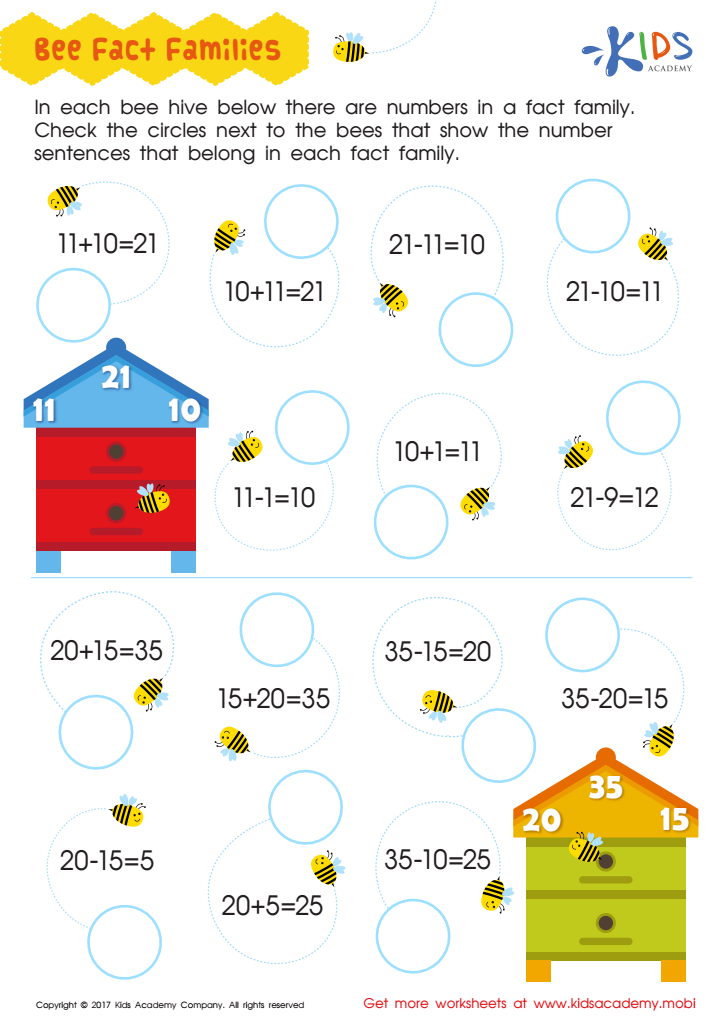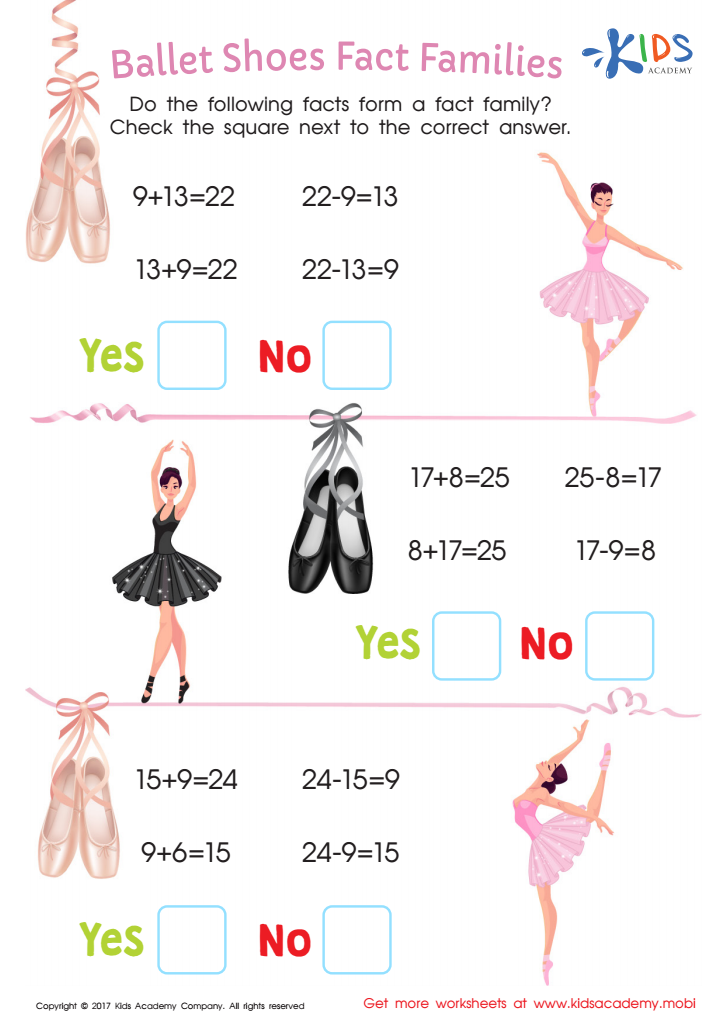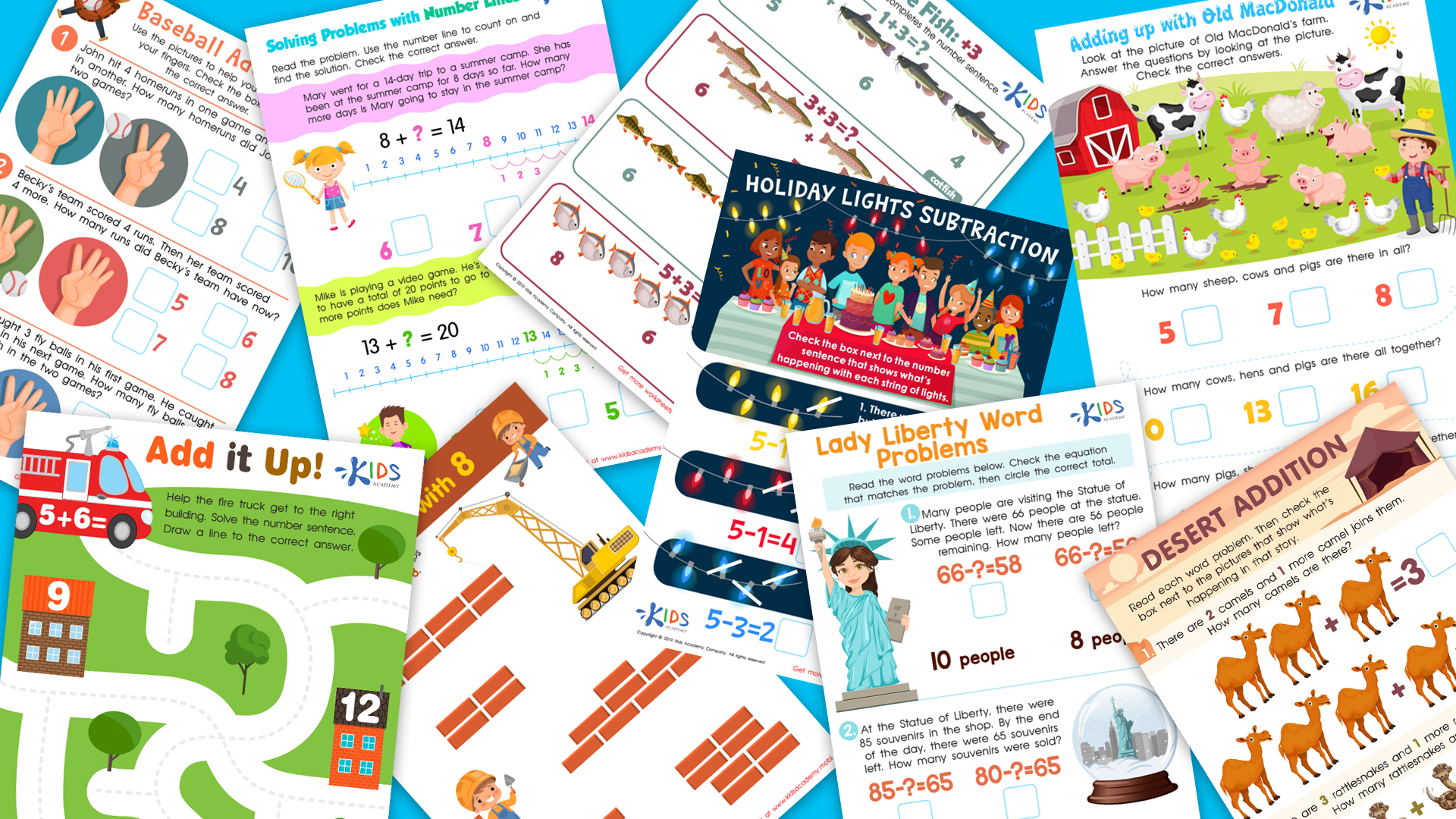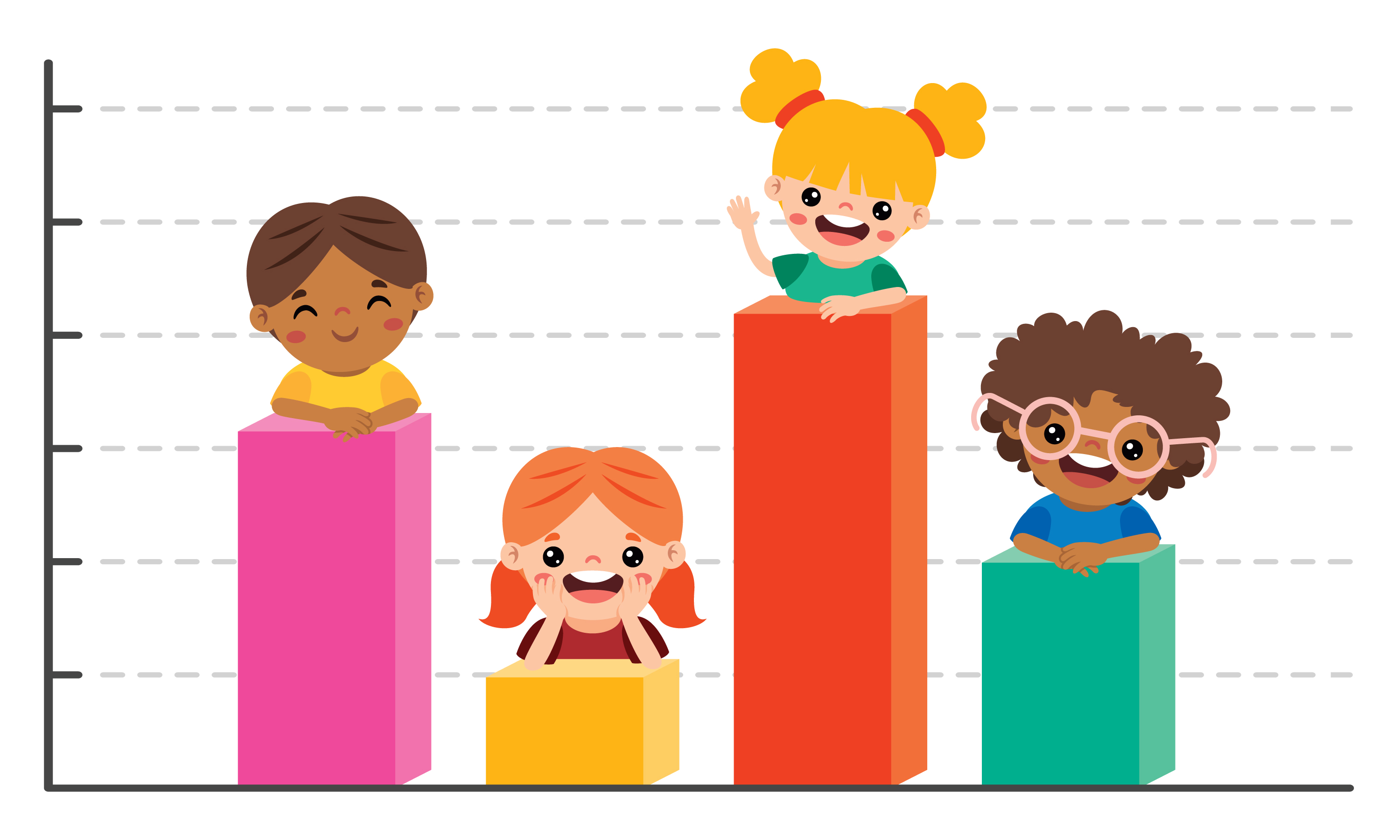Understanding fact families Subtraction Worksheets for Ages 4-7
3 filtered results
-
From - To
Unlock the mysteries of subtraction with our "Understanding Fact Families Subtraction Worksheets" designed for children ages 4-7. These engaging, printable worksheets help young learners grasp the concept of fact families, showing the relationship between addition and subtraction. Through fun exercises and colorful visuals, kids will discover how different numbers connect, enhancing their mathematical understanding and problem-solving skills. Perfect for home or classroom use, these worksheets provide a solid foundation in early math concepts, ensuring students gain confidence as they navigate subtraction. Make learning enjoyable and effective with our thoughtfully crafted resources, tailored specifically for young mathematicians!


Fact Families Worksheet


Ballet Shoes Fact Family Printable
Understanding fact families, particularly in subtraction, is vital for children ages 4-7 as it builds a strong foundation in mathematical thinking. Fact families consist of a group of related addition and subtraction equations that involve the same numbers, helping children see the relationships between these operations. This understanding allows children to grasp the concept of parts and wholes, enhancing their overall number sense.
Parents and teachers should prioritize teaching fact families because it fosters critical thinking and problem-solving skills. By recognizing how numbers relate to one another, children develop the ability to manipulate numbers more confidently. For example, if children know that 8 - 3 = 5, they can easily deduce related facts like 3 + 5 = 8.
Moreover, mastering fact families cultivates mathematical fluency, enabling students to complete calculations faster and more accurately. It also reinforces their understanding of subtraction and addition as interconnected rather than isolated concepts, paving the way for more advanced mathematical operations later.
In short, teaching fact families not only equips children with essential math skills but also encourages a love for learning and confidence in their abilities, setting them on a path for future academic success.
 Assign to My Students
Assign to My Students

















